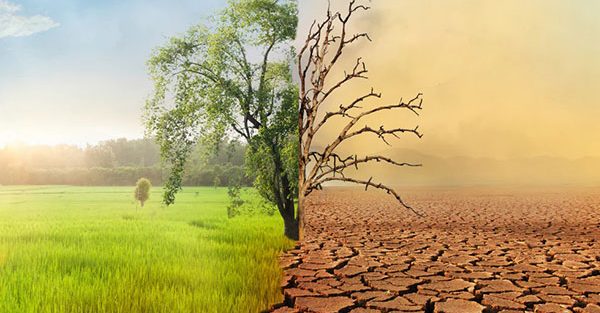Causes and Effects of Climate Change
Climate change refers to long-term shifts in global temperatures and weather patterns, primarily caused by human activities. It is a critical global issue with wide-ranging consequences for ecosystems, economies, and societies.
Causes of Climate Change
1. Natural Causes
- Volcanic Eruptions: Release greenhouse gases (GHGs) like carbon dioxide (CO₂) and sulfur dioxide, which can temporarily affect global temperatures.
- Solar Variability: Changes in solar radiation can influence Earth’s climate over extended periods.
- Natural Carbon Cycle Fluctuations: Variations in carbon storage and release by oceans, vegetation, and soils can impact atmospheric CO₂ levels.
2. Human-Induced Causes
- Burning of Fossil Fuels: Combustion of coal, oil, and natural gas for energy releases significant amounts of CO₂, a major greenhouse gas.
- Deforestation: Removing forests reduces the planet’s capacity to absorb CO₂, while clearing and burning trees release stored carbon.
- Industrial Processes: Manufacturing activities emit CO₂, methane (CH₄), and nitrous oxide (N₂O).
- Agriculture: Livestock farming produces methane, and fertilizer use emits nitrous oxide, both potent GHGs.
- Urbanization: Expansion of cities increases energy use, waste production, and land-use changes.
- Waste Management: Decomposing organic waste in landfills releases methane into the atmosphere.
Effects of Climate Change
1. Environmental Effects
- Rising Temperatures: Global temperatures have increased significantly, leading to heatwaves and extreme weather.
- Melting Ice and Rising Sea Levels: Polar ice caps and glaciers are melting, causing sea levels to rise and threatening coastal communities.
- Ocean Acidification: Increased CO₂ absorption by oceans is altering water chemistry, harming marine ecosystems like coral reefs.
- Biodiversity Loss: Shifts in habitats and ecosystems are endangering species, leading to extinctions.
2. Economic Effects
- Agricultural Impacts: Changes in temperature and precipitation disrupt crop yields, leading to food insecurity.
- Damage to Infrastructure: Extreme weather events like hurricanes and floods destroy buildings, roads, and utilities.
- Rising Costs: Increased spending on disaster recovery, healthcare, and climate mitigation.
3. Social Effects
- Health Risks: Rising temperatures exacerbate heat-related illnesses, vector-borne diseases (e.g., malaria), and respiratory problems.
- Migration and Displacement: Sea-level rise and extreme weather events force people to leave their homes.
- Water Scarcity: Altered rainfall patterns lead to droughts and reduced freshwater availability.
4. Global and Political Effects
- Geopolitical Tensions: Competition for resources, such as water and arable land, can lead to conflicts.
- Impact on Developing Nations: Poorer countries, with limited resources to adapt, are disproportionately affected.
How to Mitigate Climate Change
1. Reduce Greenhouse Gas Emissions
- Transition to renewable energy sources like solar, wind, and hydropower.
- Increase energy efficiency in buildings, transportation, and industries.
- Adopt sustainable agricultural practices and reduce food waste.
2. Protect and Restore Ecosystems
- Implement reforestation and afforestation projects.
- Conserve wetlands, forests, and marine ecosystems to enhance carbon storage.
3. Promote Climate-Friendly Policies
- Enforce carbon pricing (e.g., carbon taxes or cap-and-trade systems).
- Support international agreements like the Paris Accord to limit global warming.
4. Adopt Adaptation Strategies
- Develop resilient infrastructure to withstand extreme weather.
- Improve water management systems and agricultural practices.
Climate change is a pressing issue that requires urgent, coordinated efforts across individuals, businesses, governments, and international organizations. By addressing its causes and mitigating its effects, humanity can work toward a more sustainable and equitable future.



